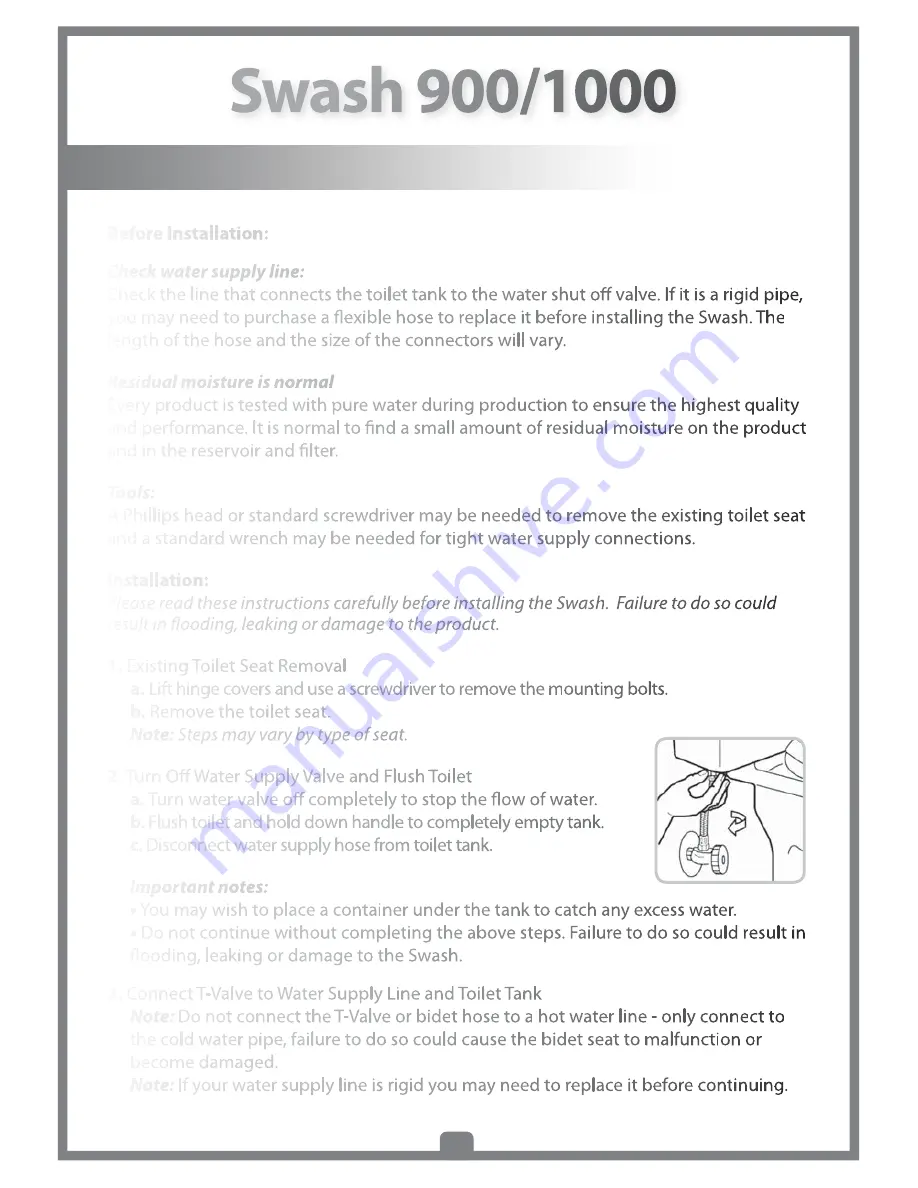
9
Before Installation:
Check water supply line:
Check the line that connects the toilet tank to the water shut off valve. If it is a rigid pipe,
you may need to purchase a flexible hose to replace it before installing the Swash. The
length of the hose and the size of the connectors will vary.
Residual moisture is normal
Every product is tested with pure water during production to ensure the highest quality
and performance. It is normal to find a small amount of residual moisture on the product
and in the reservoir and filter.
Tools:
A Phillips head or standard screwdriver may be needed to remove the existing toilet seat
and a standard wrench may be needed for tight water supply connections.
Installation:
Please read these instructions carefully before installing the Swash. Failure to do so could
result in flooding, leaking or damage to the product.
1.
Existing Toilet Seat Removal
a.
Lift hinge covers and use a screwdriver to remove the mounting bolts.
b.
Remove the toilet seat.
Note:
Steps may vary by type of seat.
2.
Turn Off Water Supply Valve and Flush Toilet
a.
Turn water valve off completely to stop the flow of water.
b.
Flush toilet and hold down handle to completely empty tank.
c.
Disconnect water supply hose from toilet tank.
Important notes:
•
You may wish to place a container under the tank to catch any excess water.
•
Do not continue without completing the above steps. Failure to do so could result in
flooding, leaking or damage to the Swash.
3.
Connect T-Valve to Water Supply Line and Toilet Tank
Note:
Do not connect the T-Valve or bidet hose to a hot water line - only connect to
the cold water pipe, failure to do so could cause the bidet seat to malfunction or
become damaged.
Note:
If your water supply line is rigid you may need to replace it before continuing.
INSTALLATION
Step 2c












































